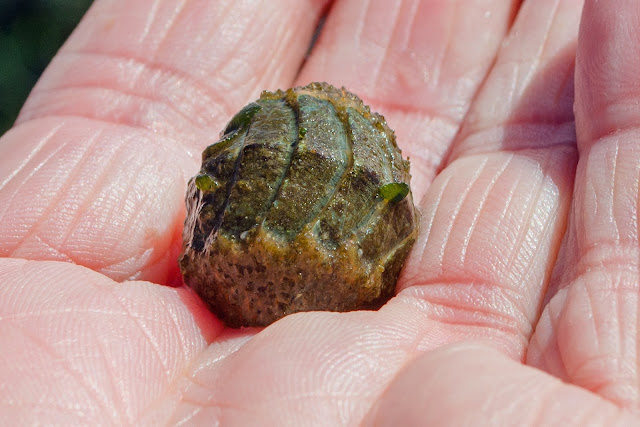 |
| Clammers, and remains of an old ship, draped heavily in sea lettuce. |
 |
| A long ship, reduced to spikes and sea lettuce holders. |
In a few inches of water between rusty girders, I noticed a little chiton, upside-down. Unusual; they're normally stuck tightly to the substrate, but maybe his perch had gotten too hot and dry for his taste.
I picked him up, and he immediately rolled himself into a tight ball. I didn't know they did that.
 |
| I think this the woody chiton, Mopalia lignosa; his hairy girdle is lighter, softer, and has shorter hairs than the common hairy chiton. |
After a brief wait, since I wasn't moving, he started to unroll himself again.
 |
| Orange underside. Like a limpet's, his foot includes a mouth (not visible on the right) and is separated from the girdle by a space which includes the gills. |
When I moved, he rolled up again, so I gently replaced him back in the water, foot down.
These chitons grow to about 3 inches long; this was a youngster. They live in the middle to low intertidal zone, mostly on the sides and bottoms of rocks. There are no rocks in the area where I found him, so he had to make do with rusty metal.
They eat mainly sea lettuce; he'd picked a good place for that; these old ships are loaded with the stuff.

Thank you for the explanation. Living now inthe topics (and not near such a tidal "flat" I like these things
ReplyDelete